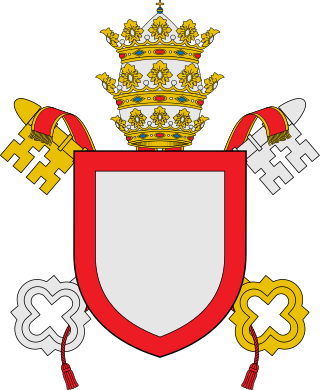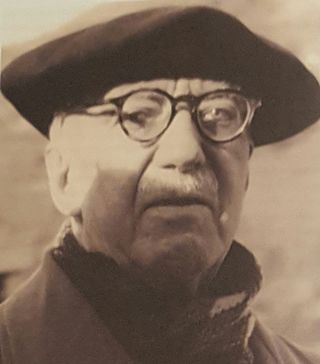Catharism was a Christian quasi-dualist or pseudo-Gnostic movement which thrived in Southern Europe, particularly in northern Italy and southern France, between the 12th and 14th centuries. Denounced as a heretical sect by the Catholic Church, its followers were attacked first by the Albigensian Crusade and later by the Medieval Inquisition, which eradicated the sect by 1350. Many thousands were slaughtered, hanged, or burnt at the stake, sometimes without regard for "age or sex."

The Inquisition was a judicial procedure and a group of institutions within the Catholic Church whose aim was to combat heresy, conducting trials of suspected heretics. Studies of the records have found that the overwhelming majority of sentences consisted of penances, but convictions of unrepentant heresy were handed over to the secular courts, which generally resulted in execution or life imprisonment. The Inquisition had its start in the 12th-century Kingdom of France, with the aim of combating religious deviation, particularly among the Cathars and the Waldensians. The inquisitorial courts from this time until the mid-15th century are together known as the Medieval Inquisition. Other groups investigated during the Medieval Inquisition, which primarily took place in France and Italy, include the Spiritual Franciscans, the Hussites, and the Beguines. Beginning in the 1250s, inquisitors were generally chosen from members of the Dominican Order, replacing the earlier practice of using local clergy as judges.

The Medieval Inquisition was a series of Inquisitions from around 1184, including the Episcopal Inquisition (1184–1230s) and later the Papal Inquisition (1230s). The Medieval Inquisition was established in response to movements considered apostate or heretical to Roman Catholicism, in particular Catharism and Waldensians in Southern France and Northern Italy. These were the first movements of many inquisitions that would follow.

Pope Benedict XII, born Jacques Fournier, was head of the Catholic Church from 30 December 1334 to his death, in April 1342. He was the third Avignon pope and reformed monastic orders and opposed nepotism. Unable to remove his capital to Rome or Bologna, Benedict started the great palace at Avignon. He settled the beatific vision controversy of Pope John XXII with the bull Benedictus Deus, which stated that souls may attain the "fullness of the beatific vision" before the Last Judgment. Despite many diplomatic attempts with Emperor Louis IV to resolve their differences, Benedict failed to bring the Holy Roman Empire back under papal dominance. He died 25 April 1342 and was buried in Avignon.

Emmanuel Bernard Le Roy Ladurie was a French historian whose work was mainly focused upon Languedoc in the Ancien Régime, particularly the history of the peasantry. One of the leading historians of France, Le Roy Ladurie has been called the "standard-bearer" of the third generation of the Annales school and the "rock star of the medievalists", noted for his work in social history.
Pierre Clergue was a priest in the village of Montaillou, France in the late thirteenth and early fourteenth century. He is the central figure in Emmanuel Le Roy Ladurie's 1975 book Montaillou, a pioneering work of microhistory. Since then he has appeared in a number of other histories, and as the villain in the fictional work The Good Men by Charmaine Craig.
Raymonde Arsen née Vital was a servant in the Comté de Foix in the early fourteenth century. She was made notable by appearing in Emmanuel Le Roy Ladurie's Montaillou. Born in Prades d'Aillon to a poor peasant family in 1306 she left to work in the home of Bonet de la Coste in town Pamiers.
Pierre Maury was a shepherd in the Comté de Foix. His life is known through his deposition, and the depositions of his friends and associates, to Bishop Jacques Fournier who was hunting for Cathar heretics. He plays a prominent role in Emmanuel Le Roy Ladurie's study Montaillou, village occitan de 1294 à 1324 and in some ways is that book's protagonist.
Raymonde Testanière, known as Vuissane, was a servant in the Comté de Foix in the late thirteenth and early fourteenth centuries. She is known to us through her testimony recorded on the Fournier Register and examined in Emmanuel Le Roy Ladurie's Montaillou. Vuissane was a servant in the Belot household from 1304 to 1307. She was also a mistress to Bernard Belot and had two children with him. Vuissane reported to have hoped to marry Bernard, but he was only interested in a wife from a wealthier family and eventually married Guillemette Benet. He also rejected Vuissane as she did not believe in Albigensianism.
Béatrice de Planissoles, was a Cathar minor noble in the Comté de Foix in the late thirteenth and early fourteenth century. She was born circa 1274, probably in the mountain village of Caussou.
Grazide Lizier née Fauré was a peasant in the Comté de Foix in the late thirteenth and early fourteenth century. Her home region was known for being Cathar, and, during an anti-Cathar inquisition carried out by Catholic authorities, she was interrogated. A number of facts about her are recorded in the Fournier Register, and her life, along with those of her fellow villagers, was analyzed in Emmanuel Le Roy Ladurie's Montaillou.

Arnaud Baille/Sicre was a cobbler in the Comté de Foix in the late thirteenth and early fourteenth century. A number of details about his life are known to us through the Fournier Register, and Emmanuel Le Roy Ladurie's analysis of those records.
Bernard Clergue was the town bayle of the village of Montaillou in the south of France in the late thirteenth and early fourteenth centuries. A great deal about his life is recorded in the Fournier Register and has been studied by historians, most notably Emmanuel Le Roy Ladurie in his book Montaillou.
Perfect was the name given by Bernard of Clairvaux to the leaders of the mediaeval Christian religious movement in southern France and northern Italy commonly referred to as the Cathars. The Perfecti were not clerics in any way, but merely members who had become 'adepts' in the teaching, and whose role was that of aiding other ordinary members achieve the rewards of belief and practice. The term reflects the fact that such a person was seen by the Catholic Church as the "perfect heretic". As "bonhommes", Perfecti were expected to follow a lifestyle of extreme austerity and renunciation of the world which included abstaining from eating meat and avoiding all sexual contact. They were thus recognized as trans-material angels by their followers, the Credentes. Perfecti were drawn from all walks of life and counted aristocrats, merchants and peasants among their number. Women could also become Perfecti and were known as Parfaites or Perfectae.

Caussou is a commune in the Ariège department in the Occitanie region in southwestern France.

Antonin Gadal was a French mystic and historian who dedicated his life to study of the Cathars in the south of France, their spirituality, beliefs and ideology.

The Château de Montaillou is a ruined castle in the French village of Montaillou, in the Ariège département. The village of Montaillou, standing on the slope of Mount Allion, was made famous in Emmanuel Le Roy Ladurie's history, Montaillou, village occitan.

Guillaume Bélibaste is said to have been the last Cathar parfait in Languedoc. He was burned at the stake in 1321, as a result of the Inquisition at Pamiers led by Jacques Fournier. Much of Bélibaste's biography can be found in the pages of Emmanuel Le Roy Ladurie's Montaillou; although Bélibaste never lived at Montaillou, he is frequently mentioned in the interrogations of suspected heretics from Montaillou.
Jean Duvernoy was a French medievalist. Born in 1917 in Bourgoin to a Protestant family, he began to study the Waldensians and later Catharism. He edited and translated a great number of sources, including Jacques Fournier's inquisition register, from which the French historian Emmanuel Le Roy Ladurie extracted Montaillou: The Promised Land of Error.

Montaillou is a book by the French historian Emmanuel Le Roy Ladurie first published in 1975. It was first translated into English in 1978 by Barbara Bray, and has been subtitled The Promised Land of Error and Cathars and Catholics in a French Village.








